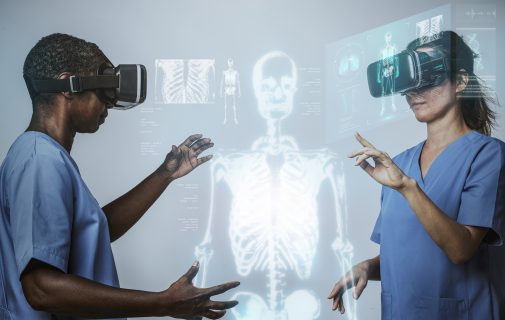 Gauging the Radiologists’ Experience With AI
Gauging the Radiologists’ Experience With AI
The job of a radiologist is a fairly complex one. In addition to going through many years of training, radiologists need to have a high level of attention to detail as well as various technical and soft skills. However, one of the things that make the job of a radiologist particularly difficult is the high volume of medical images that need to be analyzed. While AI is coming to the assistance of radiologists, the use of various AI technologies certainly presents its own set of challenges. In this article, we will take a look at the experiences radiologists are enjoying with AI and what are some possible areas of improvement.
AI is Not Living Up to Expectations of Radiologists
A recent study by the European Society of Radiology (ESR) surveyed almost 700 radiologists from 32 countries. Half of the participants had practical clinical experience with an AI. The results of the study showed that 75% of the respondents found the AI systems to be reliable, but only 22% said that they noticed a significant workload reduction thanks to AI. Furthermore, almost 70% responded that the AI had no effect on the volume of their workload whatsoever.
It’s interesting that while AI is being used to complete a variety of tasks in radiology, such as interpretive tasks, image post-processing, and prioritization in the workflow, the overall effect the AI is having is fairly modest. Perhaps one of the reasons for this is that the accuracy level of the AI systems is not high enough to be trusted and requires significant human intervention. This could potentially be improved with more training datasets to teach the AI to do its job better. With this in mind, let’s take a look at some of the reasons why AI is not having a greater impact on the daily lives of radiologists.
What are Some of the Barriers Preventing AI From Achieving Its Potential?
In the previous section, we mentioned that more data is needed to train AI systems. However, it’s not so easy to obtain this data. A lot of the medical images that can be used as part of training datasets are covered by various laws and regulations, such as GDPR or HIPAA, and many other laws governing privacy, research, and fraud prevention rights. This is why a lot of AI companies that require these types of datasets hire third-party companies that can take it upon themselves to obtain the needed data and navigate the regulatory framework.
Another reason is the integration of AI into the daily routine of radiologists. Most radiologists have tools and methods they have been using for many years, and transitioning to an AI approach will require a lot of getting used to. One of the problems radiologists are experiencing is with usability. A lot of times, it is not clear what the findings are or even whether or not the system has finished analyzing the images. There may also be some problems with the workflow where the patient’s doctor would see the results of the analysis before the radiologist. Therefore a lot of setup and practice is needed on behalf of both radiologists and data scientists.
The Potential for AI in Radiology Remains Huge
There is no need to fear that AI will replace radiologists any time soon. Instead, it should be viewed as a tool with huge potential. As the field of radiology continues to grow, so do precision levels. Perhaps the increase in accuracy will help remove some of the hesitation radiologists are experiencing toward the automation levels, which can make their lives easier. Since radiologists need to look at many images throughout the day, it is only natural that people will try to automate this part of the job. It is possible to train ML algorithms to detect all kinds of abnormalities based on the image, so why not use this technology to free up radiologists?
Thanks to advances in technology, the algorithms are capable of teaching themselves while radiologists oversee their effectiveness. The longer the algorithms are used, the more effective they will be since they will have more opportunities to learn. Radiology could fast become one of the most creative specialties where problem-solving and the holistic approach are key. So, with all this said, it definitely doesn’t mean that AI will take over all of a radiologist’s tasks which is why AI technology is definitely something radiologists need to embrace.















 Gauging the Radiologists’ Experience With AI
Gauging the Radiologists’ Experience With AI










